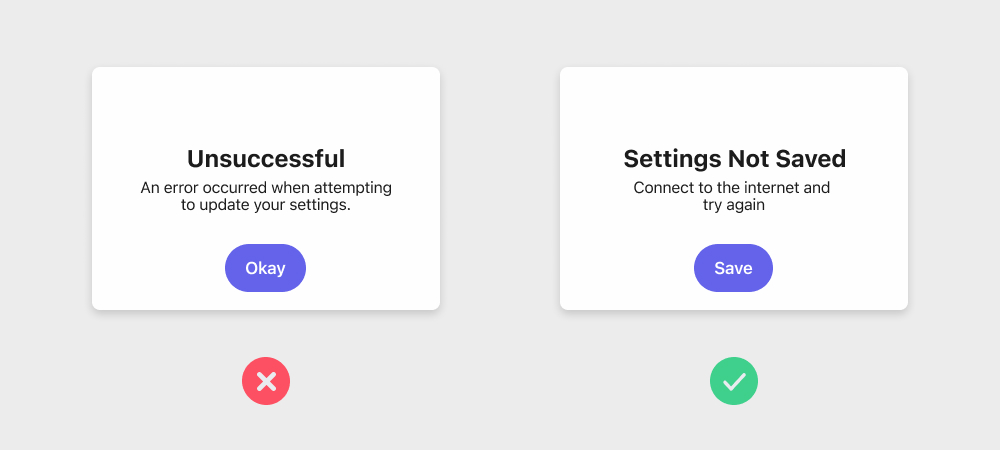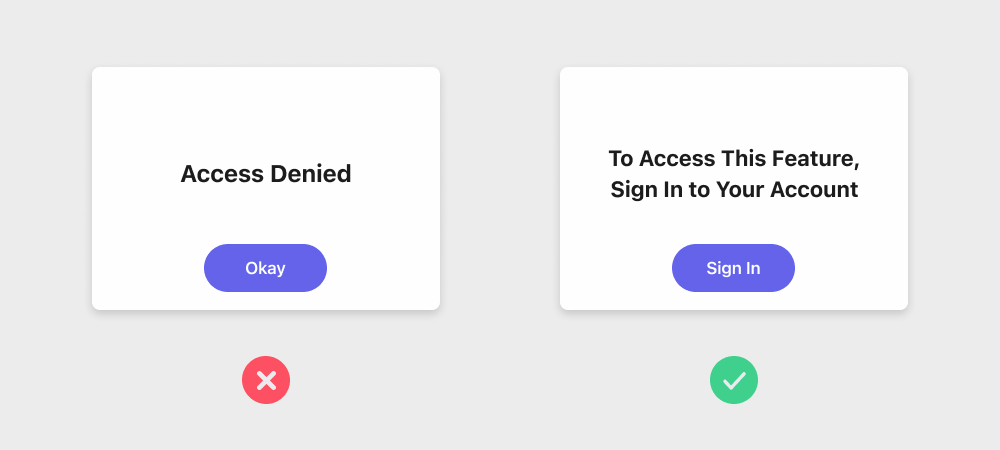
User experience (UX) writing is an often overlooked, but extremely important aspect of any digital product or service. It involves the deliberate use of words and language to guide users through a User Interface (UI), helping them achieve their goals while also providing them with a frictionless and even an enjoyable experience.
No matter what digital application you’re designing, using UX writing best practices is an important part of any well-designed user experience. In this blog, we will dive into 8 of the key principles that can help you master the art and science of UX writing. I touched on a few of these principles in my previous blog, but it won’t hurt to review them again more in-depth. They’re that important!
Looking for more of an introduction to the basics of UX writing? Read my other blog, Don’t Underestimate the Power of Good UX Writing in Product Design.
Get To Know Your User
Understanding your audience is not a one-time effort but an ongoing process. Start with user research to create detailed user personas. These personas should include demographic information, pain points, goals, and preferred communication styles. They will be your North Star and help guide your writing in the appropriate direction throughout the process.
There is a seemingly endless list of other things you could do to help understand your product’s users. Here are a couple tried and true tactics to get you started.
- User Testing: An invaluable activity for refining your UX writing and truly understanding your user. Let users actually interact with your product, have them provide feedback on content clarity, tone, and the overall experience. A/B testing is a specific strategy to use when user testing that can help determine which versions of text best resonate with your audience.
- Understand Cultural Differences: Localization is not just translating words; it’s about adapting your content to cultural norms and sensitivities. What works in one culture might be totally wrong and even inappropriate for another. Involve native speakers and/or cultural experts in the localization process to ensure the original intent of your content remains the same across all cultures and languages that your product will be used in.
Be Concise & Clear
Clarity is not just about using simple words; it’s about making sure that every word serves a purpose. It is critical to keep the user’s cognitive load in mind. The less they have to think about what a phrase means, the more they can focus on completing the task at hand successfully.

Maintain Consistency
Consistency extends beyond language and tone; it also includes design elements like typography, colors, and visual cues. By maintaining a consistent style guide, you create a sense of predictability for users. Predictability is synonymous with safety. When users feel safe using your product, they will be more likely to use it again in the future.

Give Context When Providing User Assistance
Context-aware assistance is all about providing the right help at the right time. UX writing plays an important role in delivering the right information or guidance at just the right time. Analyze user behavior, AKA do user testing, to determine when and where users might need assistance in completing a desired task.
For example, if a user repeatedly tries to reset their password, the system could recognize this pattern. It could then offer step-by-step password reset instructions at the right moment. This will help reduce user frustration and hopefully prevent them from rage quitting the application.
Microcopy, Macro Impact
This potentially the most important kind of UX writing. Microcopy is small bits of text that guide users through a digital experience. I could write an entire blog post on this subject alone. While these bits of text can seem small and insignificant, they can dramatically impact user interactions and the user’s overall experience. Some microcopy best practices include:


Remember that microcopy should resonate with the user’s emotional state. It’s important that the user feels understood when frustrated and reassured when completing a task successfully.
Prioritize Accessibility
Accessibility isn’t just a nice to have; it’s a legal requirement in many countries. Ensuring your content is accessible to all is not just about good writing; it also involves proper markup, alt text for images, keyboard navigation, and ensuring compatibility with screen readers.
Make sure to follow the Web Content Accessibility Guidelines (WCAG) and perform regular accessibility audits to identify and correct issues that will inevitably happen as your product evolves and updates are pushed out to users. If you want to learn more about accessibility, my lovely coworkers Laura Buckles and Brant Hughesboth wrote great articles on the matter.
Be Positive
Be a glass-half-full kind of application. Positive language not only conveys a friendly and encouraging tone but also helps users feel more in control and capable. It’s important to avoid negative phrasing that can make users feel discouraged or frustrated. Whenever you need to communicate an error or constraint, include a solution or a clear path forward.

Teamwork Makes the Dream Work
Effective UX writing requires collaboration with other disciplines and members of other teams across your organization. “It takes a village”, as they say. Designers, developers, product managers, and people on other teams within your company all play a role in creating a consistent user experience across related products and platforms. Regular communication and collaboration can prevent conflicts and ensure that the design, functionality, and content align seamlessly for the end user.
Mastering UX writing is something that certainly doesn’t happen overnight. It involves a deep understanding of your product’s users, constant testing and iterating of content, and collaboration across teams to be implemented successfully. Following these best practices will help get you well on your way to creating user experiences that will not only meet user needs, but surprise and delight them as well. Remember, the true art of UX writing lies in its ability to make the user’s journey feel effortless and enjoyable.
Let’s build awesome things together.
Our approach to Product Design & UX is holistic, integrating business, tech, user needs, and market demands.